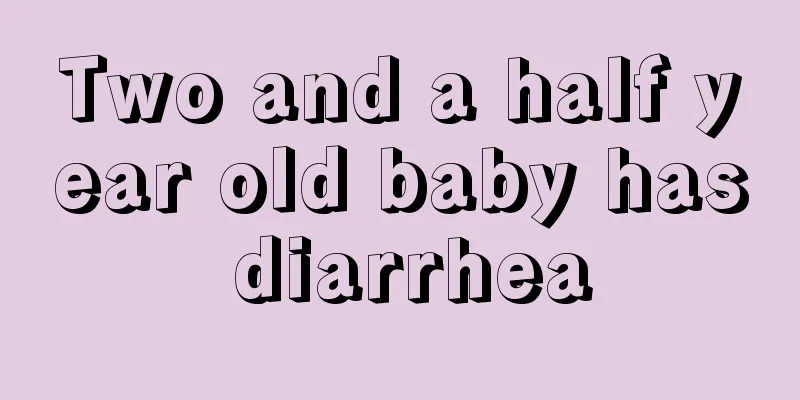What should I do if my child has a fever or diarrhea?

|
If children have poor physical fitness or bad gastrointestinal function, they are still very likely to suffer from diarrhea and fever. So what should we do if children have fever and diarrhea? Family members cannot watch their children fall ill and do nothing. If the treatment time is repeatedly delayed, it will only lead to aggravation of the disease, and the consequences will be disastrous. In fact, there are many methods that can relieve diarrhea and reduce temperature and fever. 1. For infants under one and a half years old, the anterior fontanelle has not yet completely closed. Parents can cover the child's anterior fontanelle with the palm of their hand after the child falls asleep, and continue covering until the child's head sweats slightly. It is best for the child's father to do this, as men have high temperatures and babies are prone to sweating. When I looked at the baby again at this time, his nose was unblocked, his breathing was steady, and his temperature had dropped. At this time, parents can wake up the baby and feed him more warm water or brown sugar water, and the baby will soon recover. 2. Most children's fever is caused by colds. When they have a fever, their hands and feet are cold, their tongue coating is white, their face is pale, and their urine is light in color. Parents can use ginger and brown sugar water to dispel the cold for their children, and the effect is good. If 2 to 3 pieces of green onion cut into one-inch long are added to the ginger and brown sugar water, the effect will be better. If the child is afraid of spicy food, you can add two slices of ginger, two pieces of green onion, and a few drops of vinegar to the porridge for the child. After cooking, remove the ginger and green onion and feed it to the child. It can dispel cold, induce sweating, and reduce fever. The effect is good, and children are willing to eat it. Parents can feed their children 2 to 3 times a day. Do not add onions after the child's fever subsides. Ginger can also be omitted when the tongue coating is no longer white. 3. If the child's hands and feet are not cold when he has a fever, but his face is red, his throat is swollen and sore, his tongue is yellow or red, his urine is yellow and has a strong odor, and his eyes are red, it means that the child has a lot of internal heat in his body and he should not drink ginger and brown sugar water. Parents should let their children drink plenty of warm boiled water. You can also add a small amount of salt to the water to make it light salt water for the child to drink, which can eliminate internal heat. Only if children drink plenty of water and urinate more often, allowing the internal heat in the body to be discharged with urine, will their body temperature drop and the symptoms of getting a fever improve. The above article gives a clear introduction on what to do if children have fever and diarrhea. I believe everyone has a clear idea of what to do. Families need to let their children develop good living habits from an early age, especially in terms of diet, which should not be taken lightly. It is also necessary to pay attention to warm and nutritious diet and avoid eating raw, cold and irritating foods. |
<<: What causes fever and convulsions in children?
>>: What should I do if my baby has a fever and diarrhea while teething?
Recommend
How should the bib be disinfected?
The issue of children has always been a concern f...
What are the developmental indicators for a two and a half year old baby?
In life, a newborn baby is the focus of the whole...
The baby is still sucking after falling asleep
Many mothers find that their babies are still suc...
Why do children fart smell bad?
Children will fart when they reach a certain age,...
What are the recipes for baby iron deficiency anemia?
With the increasing work pressure of many adults,...
What should I do if my baby’s tongue is cut by teeth?
When babies just learn to walk, falling is inevit...
What is the problem of white spots on children's nails?
When parents are taking care of their children, t...
What to do if your baby has eczema around his mouth
For every mother, the baby is everything to them,...
How do adolescents grow taller?
The physical health of children is the top priori...
What is the correct posture for patting a burp?
Many young mothers have no experience in parentin...
What is the normal body temperature range for a 6 month old baby?
Many babies have low immunity, and some bacterial...
Causes of high white blood cell count in infants
For many babies, their bodies are not fully devel...
How to deal with burns and peeling of children
When the baby is scalded again, parents must not ...
What’s going on with the white spots on my 4-year-old baby’s face?
Children around four years old generally have rel...
Treatment for babies who always have fever at night
The problem of babies always having fever at nigh...









